Introduction: How to measure your fitness level -Part 1. Welcome to the wonderful world of fitness testing, where we get to see just how out of shape we really are. But don’t worry, we’ve got you covered with easy-to-do tests that won’t require you to sell a kidney to buy expensive equipment or get a degree in sports science. In Part 1 of this series, we’ll be measuring your aerobic and anaerobic capacity, strength, and speed. So, let’s strap on our heart rate monitors, lace up our sneakers, and get ready to sweat!
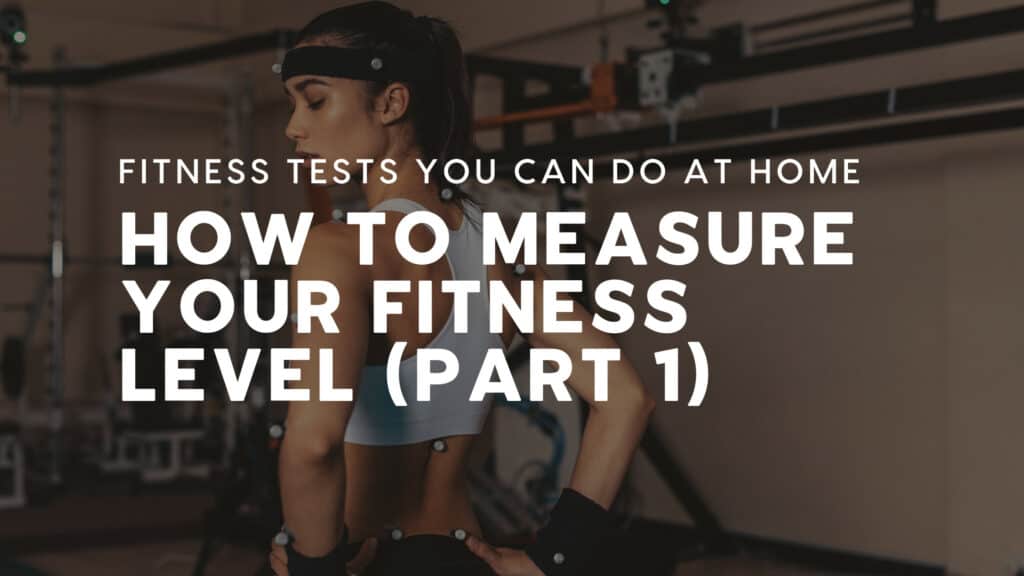
Most fitness tests used in sports science require expensive laboratory equipment or training.
However, there are some tests you can simply perform at home with minimal equipment and still get reliable data.
We’ve done the hustle for you and made a list with easy-to-do fitness tests for each one of the 8 + 1 physical abilities.
You can use them to gauge your general fitness quickly and as a benchmark for future testing.
After taking these tests, you may wish to train for a few months. Then, take the tests again and compare the results.
In this first part of the article, we’ll see how to assess your aerobic and anaerobic capacity, strength, and speed.
In part 2, we’ll discuss the rest of the physical abilities.
Let’s see them!
1. Aerobic Capacity: Queens College Step Test
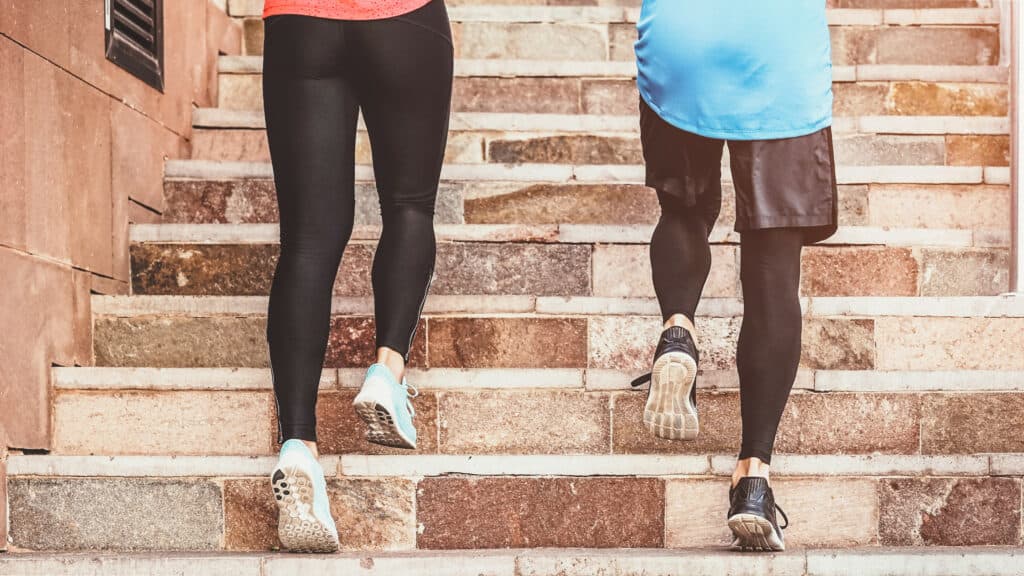
Equipment required: 16.25 inches / 41.3 cm platform, stopwatch, metronome, and heart rate monitor (optional).
Instructions (you can also watch this video):
– Set the metronome at 88 bpm for women or 96 bpm for men.
– Start stepping up and down on the platform using a four-step cadence, ‘up-up-down-down.’
– Every beat on the metronome is matched with a step up or down.
– Stop after 3 minutes and immediately count your heartbeats for 15 seconds.
– Multiply this 15-second reading by 4 will, and you’ve got your post-workout heart rate.
– Compare your score with these normative data:
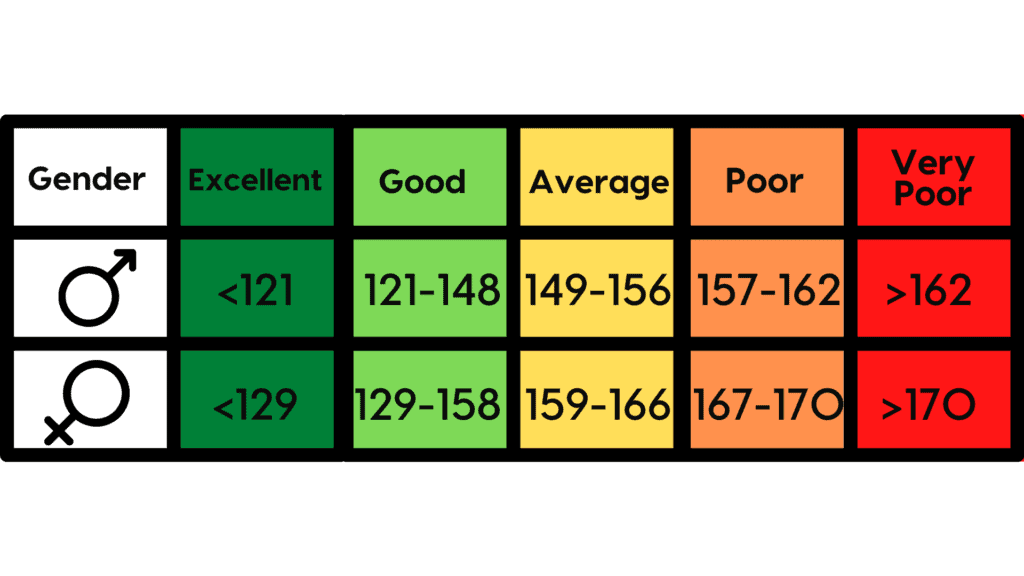
2. Anaerobic Capacity: 300 Meter Run Test
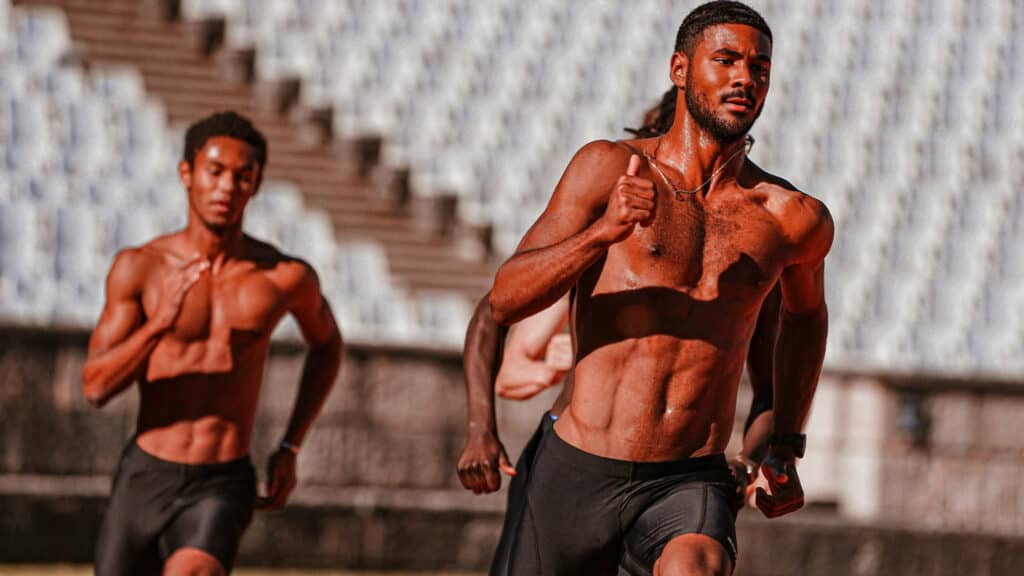
The 300m run is a long sprint test and a test of anaerobic capacity,
Instructions:
– The aim of this test is to complete 300 meters in the quickest possible time.
– Ensure that a good warm-up is conducted before the test, including a jog, stretches, and some short sprints.
– When the clock starts, begin running.
– Record the total time to run 300m to the nearest tenth of a second.
– The table below lists ratings for the test for adult males. Compare your score with these results.
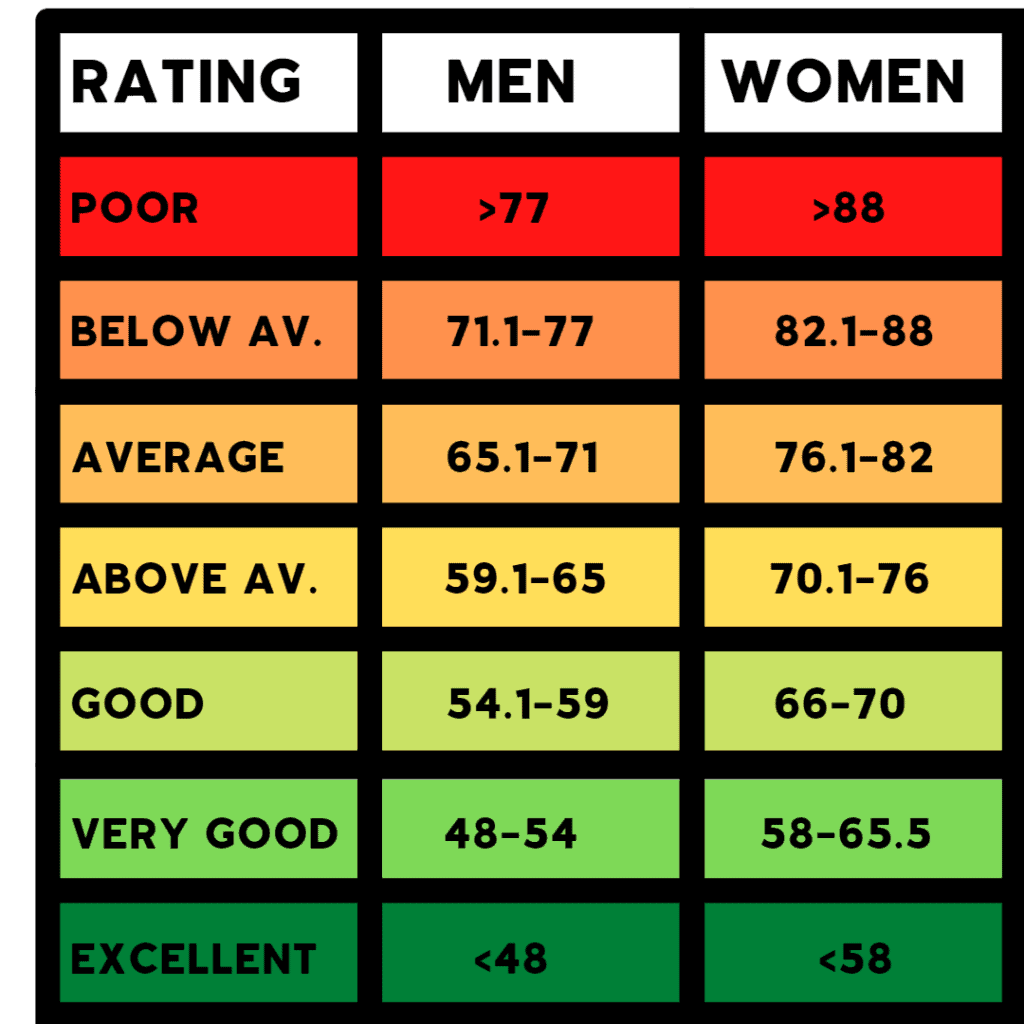
3. Strength: Push-Ups Test
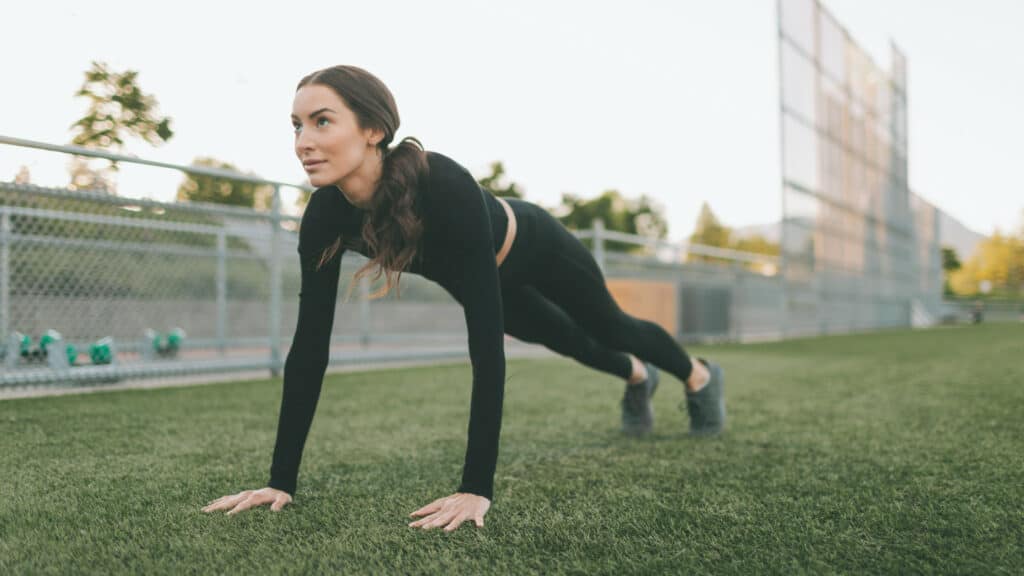
The goal is to do as many push-ups as possible until exhaustion.
Instructions (you can also watch this video):
– Use the standard “military-style” push-up technique.
– The starting position is facing down with your weight distributed on the hands and feet, arms straight.
– The body is rigid and straight, and the hands are placed approximately shoulder-width apart.
– Lower your body until your chest nears the floor at the bottom of the movement, and then return up to the starting position. This is one repetition.
You also have the additional option of using the “bent knee” technique.
To do this, kneel on the floor, hands on either side of the chest, and keep your back straight. Lower the chest down towards the floor, always to the same level each time, either till your elbows are at right angles or your chest touches the ground.
– The test stops if you start piking or arching (see video)
– Count the total number of push-ups performed to exhaustion.
– Compare your results to the tables below
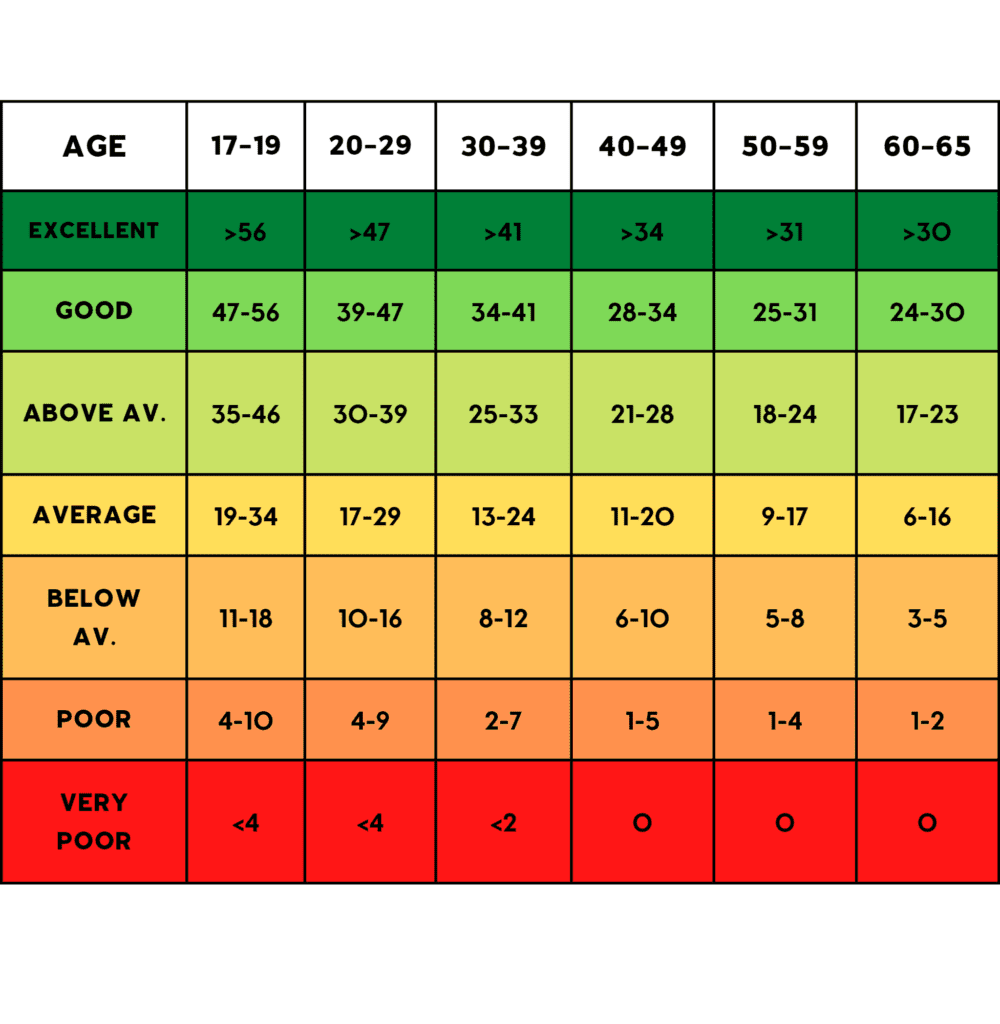
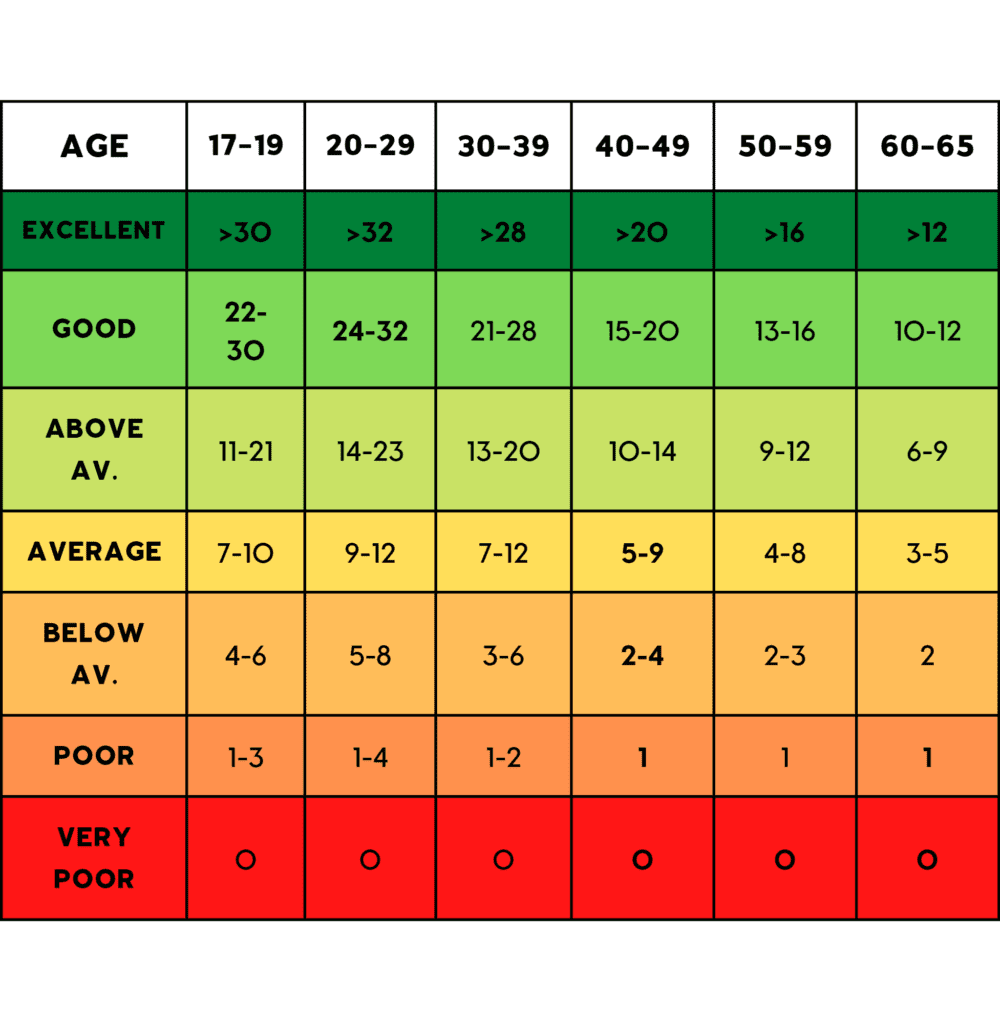
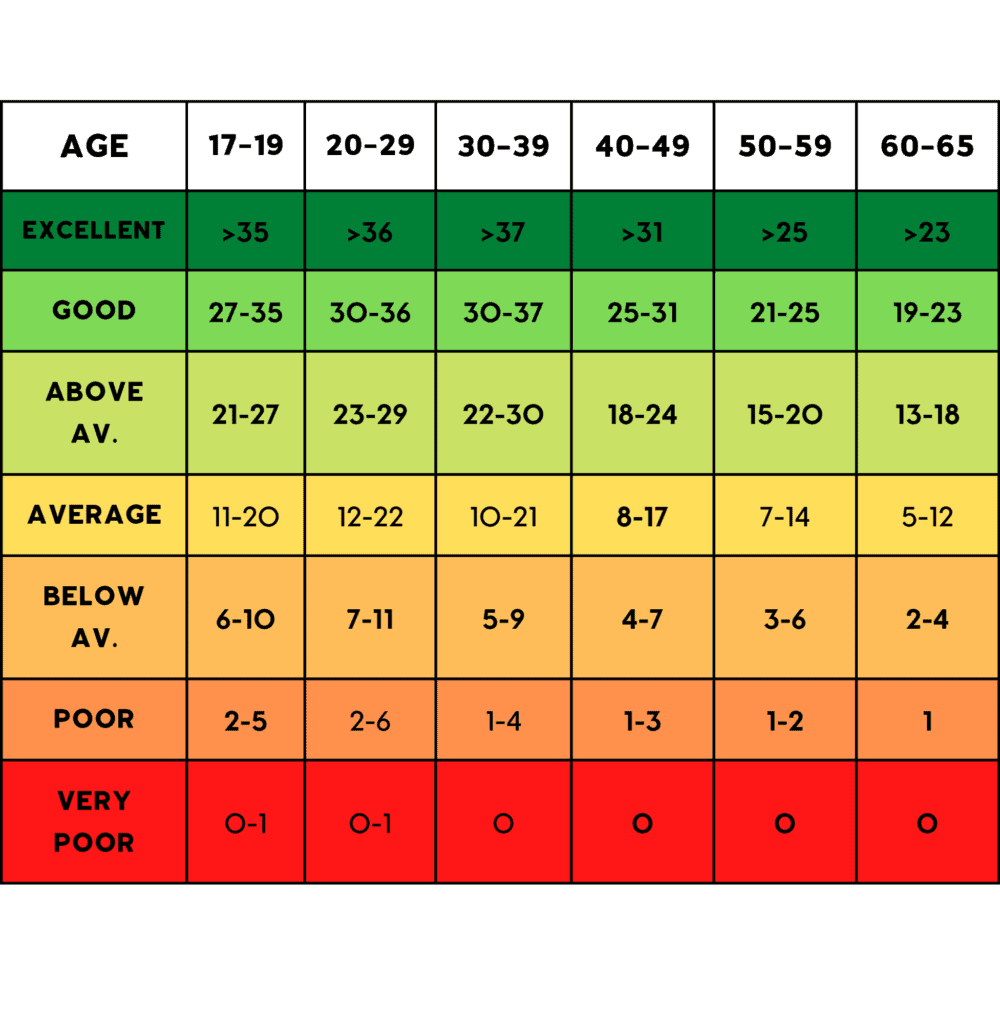
4. Speed: 20 Meter Dash
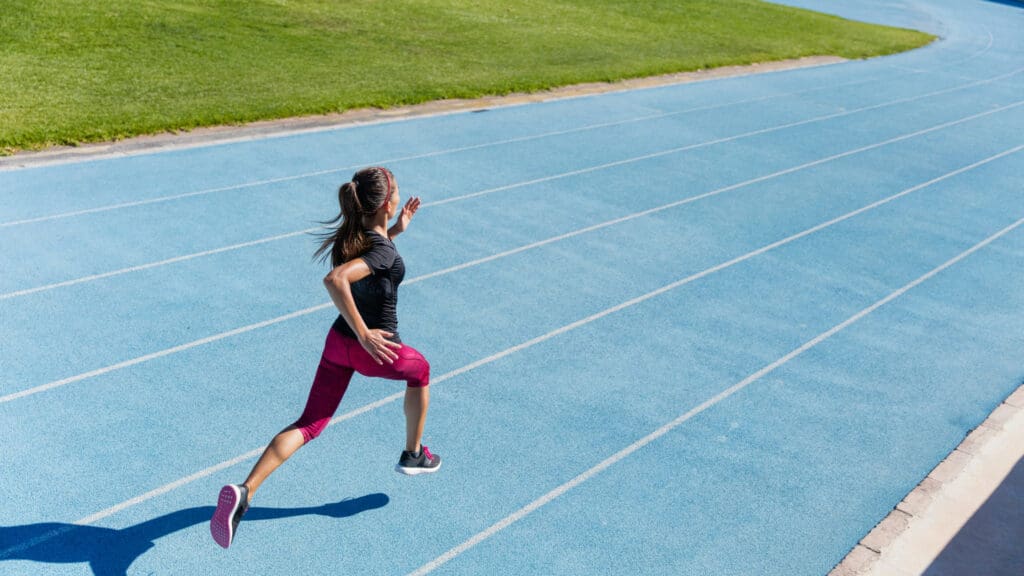
The 20 Meter Dash is commonly used by Basketball and Soccer athletes.
Equipment required: measuring tape, stopwatch, cone markers, flat and clear surface of at least 40 meters.
Instructions:
– The test involves running a single maximum sprint over 20 meters, with the time recorded.
– A thorough warm-up should be given, including some practice starts and accelerations.
– Start from a stationary position, with one foot in front of the other. The front foot must be on or behind the starting line.
– This starting position should be held for 2 seconds prior to starting, and no rocking movements are allowed.
– Repeat the test two times and record your best time. You want to see your time improving as you repeat the test in the future.
Conclusion
In conclusion, measuring your fitness level is an essential step toward achieving your fitness goals. With the easy-to-do fitness tests outlined in this article, you can quickly assess your aerobic and anaerobic capacity, strength, and speed with minimal equipment. These tests provide reliable data that can serve as a benchmark for future testing and help you track your progress over time. Remember to train for a few months before taking the tests again and comparing the results. Stay tuned for part 2 of this article, where we’ll discuss the rest of the physical abilities. Keep hustling towards your fitness goals!
If you want a tailor-made fitness plan that will save you time and get you in shape faster, let us know, and we’ll get it done.
We know it’s hard to get in shape when you have a busy life. At Physical, we design a plan that works around your schedule so you can stay healthy and get your dream body faster.
Click the Subscribe Button below and meet your coach.
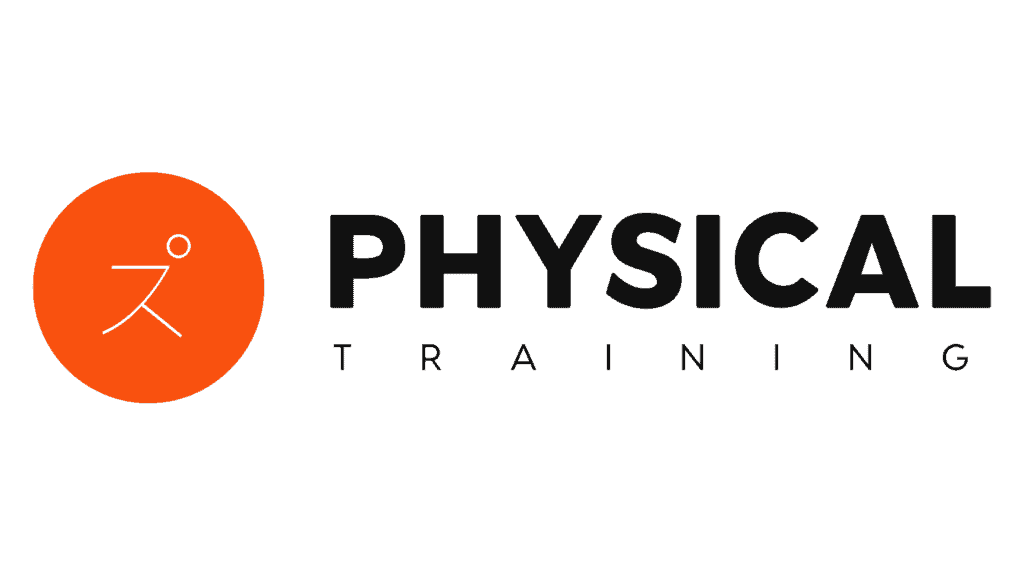
FAQs:
Q: Why is it important to measure your fitness level?
A: Measuring your fitness level can give you a good idea of your overall health and help you identify areas you need to improve. It can also provide motivation to stick to a fitness routine and track progress over time.
Q: Do I need expensive equipment to measure my fitness level?
A: Not necessarily. While some fitness tests do require specialized equipment, there are plenty of tests you can do at home with minimal equipment and still get reliable data.
Q: How often should I measure my fitness level?
A: It’s a good idea to measure your fitness level every few months to track progress and identify areas that need improvement.
Q: Is inflammation always bad?
A: Inflammation is a natural response to tissue damage, and it helps repair the damage. However, chronic inflammation can have severe implications for your health.
Q: What should I do if my fitness level is not where I want it to be?
A: Don’t get discouraged! Use your results as motivation to start or continue a fitness routine and work towards your goals. Remember, progress takes time and consistency.
Q: Can I cheat on these tests?
A: Sure, you can cheat… but the only person you’ll be cheating is yourself. Be honest with your efforts and results, and you’ll see progress in no time.
